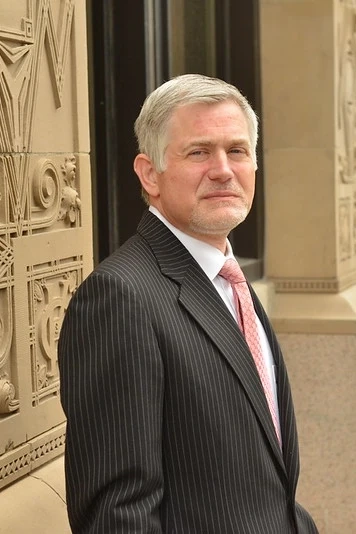The alternatives to prison in Minneapolis, Minnesota, include probation, drug courts, mental health courts, and restorative justice programs. These alternative sentences are usually offered to people found guilty of committing crimes. They reduce recidivism, save money, keep families together, and help rehabilitate offenders.

Offenders charged with or accused of criminal offenses can participate in a diversion program to avoid convictions, jail, or charges. A diversion program helps reduce the burdens and costs on the criminal justice system. It targets problems, such as housing and food insecurity, lack of educational resources, and unemployment, which cause most crimes.
Table of Contents
Finding Alternatives to Incarceration in Criminal Cases
An alternative to incarceration in a criminal case is any punishment other than jail or prison given to an offender. This prison reform can help repair the damages crime victims suffer, rehabilitate offenders, and benefit the community. Alternatives to incarceration in drug cases, for instance, treat and rehabilitate drug-addicted offenders and help them regain control of their lives.
Finding prison alternative programs is crucial since each crime and offender is unique. Jail or prison time may not always be the most appropriate punishment for offenders. If the criminal justice system has options outside incarceration, it can tailor a sentence that suits the crime and offender and protects the public.
Examples of Restorative Justice Programs
Restorative justice emphasizes the need to repair the damages caused by criminal behavior. Restorative justice programs involve all stakeholders and transform the traditional relationship between the government and communities in responding to crime. Examples of these programs include:
- Family Group Conferences – involve discussions about the impact of the crime on the victims, family, and friends and how to hold the offender accountable
- Victim-Impact Panels – forums that crime victims use to explain the real-life effects of criminal behavior to offenders
- Victim-offender mediation – a process allowing the victims to meet their offenders in a structured and safe setting to discuss, negotiate, and solve disputes
- Circle Sentencing – helps address the delinquent and criminal behaviors of offenders and the needs of victims, communities, and families
- Community Reparative Boards – comprise trained citizens who hold meetings with offenders
Benefits of Restorative Justice
Restorative justice programs offer answers to questions, direct accountability, and restitution/reparation to the victims and survivors. Victims also enjoy community support and opportunities to be heard and understood. They can directly or indirectly communicate with others involved.
Restorative justice programs allow offenders to be accountable and change their criminal ways. They also offer community support and reintegration to offenders. Other benefits for offenders include encouragement for personal transformation and opportunities for communication.
Community members enjoy an increased sense of safety when participating in restorative justice. They also get to reduce re-offending and hold dialogues with offenders. As a result, restorative justice builds relationships and strengthens the sense of community.
Common Diversion Programs in Minnesota
Diversion programs allow offenders charged with or accused of criminal offenses to avoid charges, jail time, or convictions. As such, it reduces the burdens and costs to the criminal justice system. The two types of diversion programs in Minneapolis, Minnesota, are pretrial and pre-charge diversion.
A pretrial diversion requires the defendant to complete an alternative sentencing program for his or her charges to be dismissed. The program takes effect before the trial when you have been charged with a crime. If you qualify for a pretrial diversion, expect the prosecution to be paused.
A pre-charge diversion program, on the other hand, helps you avoid a conviction, jail, and a criminal record. However, the state has to contact you about this program, which you can review with the help of a criminal defense lawyer. The program suits low-risk or first-time offenders with low-level criminal charges.
Examples of diversion programs in Minnesota include shoplifting/theft, traffic education, and driving diversion programs. Other examples include the community restorative justice diversion program and the Northern Star Juvenile diversion program. Here’s a breakdown of these programs:
Traffic Education Diversion Program
You must have received a traffic violation to qualify for this program. Once you enroll, you will undergo in-person or online training that reviews road safety rules and teaches you good driving habits. You will also take an exam to test your comprehension of this program.
Theft or Shoplifting Diversion Program
Defendants accused of low-level theft or shoplifting can be eligible for this program. These offenses may include shoplifting or theft at gross misdemeanor or misdemeanor level, and sometimes at felony levels. The program includes classroom training and instruction, paying restitution to the victim, community service, and writing an apology letter addressed to the victim.
Community Restorative Justice Diversion Program
This program requires you to meet some community members to deliberate on the effect of your offense on the community. The meeting helps create an agreement for compensating the victims of the crime. You will also agree to sanctions, community service, and writing an apology letter at the meeting.
Northern Star Juvenile Diversion Program
Juvenile offenders (first-time or second-time) aged from 13 to 18 years old can qualify for this program. Northern Star Juvenile Diversion uses structured activities to teach decision-making and leadership skills to the offenders. It serves as an alternative to the juvenile court system.
Driving Diversion Program
Drivers with unpaid fines or citations that result in license suspension can enroll in the driving diversion program. They can get provisional reinstatement of their driver’s licenses, allowing them to drive legally. However, the citations and fines must be paid, and community service, classes, a driving test, and a writing test completed.
Success Rates and Impact on Reducing Prison Populations
Diversion programs recognize that relationship-building, service provision, healing, and restoration are more effective at the community level rather than prison. This way, they reduce crime, improve public safety, and cut incarceration costs. Offenders can participate in these programs at various stages of the criminal justice process since the programs vary in form, eligibility requirements, and desired outcomes.
In particular, pre-arrest diversion programs allow law enforcement officers to discreetly connect people with services and support that address their underlying needs. They reduce cases of people getting arrested for nonviolent criminalized behaviors and misdemeanors. People who need access to mental health or substance use treatment can find these programs beneficial.
The hostile conditions in prisons and jails often do not result in favorable outcomes for offenders. Incarceration uses taxpayer money and denies opportunities to communities affected by mass incarceration. For people charged with offenses, diversion programs reduce the chances of future conviction or contact with the criminal legal system.
Examples of Community-Based Programs in Minnesota
Community-based programs that are alternatives to jail time and prison in Minneapolis, Minnesota, revolve around pretrial diversion, probation, community service, mental health and substance abuse treatment, and restorative justice. They offer offenders the services and support they need to avoid future criminal behavior and turn their lives around. Some examples of these programs include:
- Minnesota Center for Restorative Justice, which offers restorative justice programs like community conferencing, victim-offender dialogue, and mediation
- Minnesota Department of Corrections Day Reporting Centers that offer substance abuse treatment, education, and job training to offenders on supervised release or parole
- Minnesota Association of Community Corrections Act Counties, which operate corrections programming in communities
- Minnesota Department of Human Services Mental Health and Substance Abuse Services, which offers substance abuse and mental health treatment services to people in the community
- Minnesota Association of Alternative Programs, which comprises a network of community-based programs offering alternatives to prison to people with substance use and mental health problems
Advantages of Community-Based Programs
Besides offering a viable alternative to imprisonment, community-based programs boast several other advantages. These advantages range from recidivism and cost-savings to enhancing family relations and rehabilitation.
Community-based corrections programs address the underlying causes of crimes. They focus on lack of employment, substance abuse, and mental health problems. When these problems are addressed, people who go through these programs are less likely to commit crimes.
It’s less costly to run a community-based program compared to imprisonment. As such, sentencing offenders to these programs can help lower the costs that the Minnesota Department of Corrections incurs every year. The cost savings can be directed to other programs that benefit the community.
Incarceration can negatively affect family relations. Community-based programs help people stay connected with their communities and families. They help offenders reintegrate into the community successfully after completing their sentence.
Current Sentencing Policies in Minnesota
Minnesota’s sentencing policies set appropriate punishment for offenders charged with felony-level offense (the presumptive sentence). The punishment depends on the offender’s criminal history, type of the offense in question, and its severity. The Minnesota Sentencing Guidelines Commission (MSGC) develops and maintains these sentencing policies.
MSGC is a seven-member commission appointed by the Minnesota governor and confirmed by the state senate. It comprises judges, attorneys, and criminal justice professionals. It reviews and updates the sentencing policies. The Minnesota legislature reviews these guidelines every two years and proposes changes, which the governor must approve.





